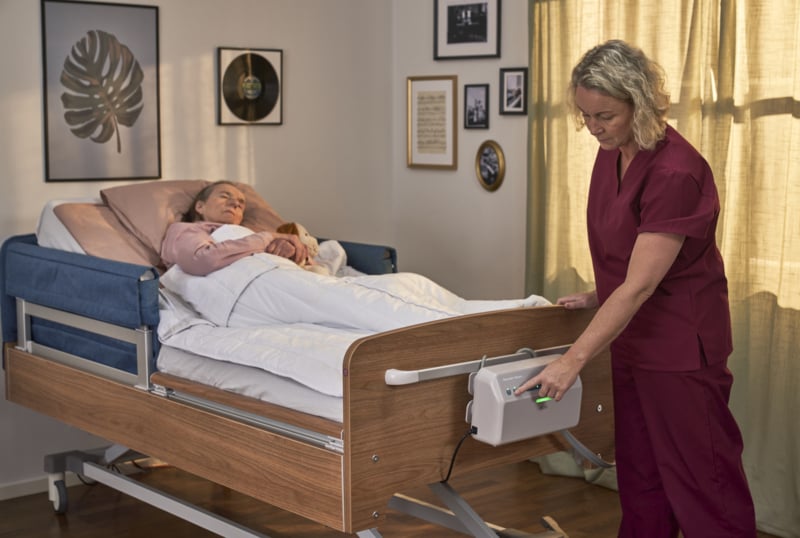Choosing the right support surface strategy for your LTC facility: A clinical perspective
In nursing homes and assisted living facilities, selecting the right support surface isn’t just a clinical decision, it’s a strategic one. With rising acuity levels, staffing constraints, and pressure injury risks, administrators and clinical leaders must balance resident safety, caregiver efficiency, and operational sustainability.

This article offers a clinical perspective on how to evaluate and implement a support surface strategy tailored to your facility’s needs, using four proven solutions: Simulflex®, AtmosAir® 9000X, AtmosAir® Velaris, and Skin IQ®.
1. Understand your resident risk profile
Support surface selection begins with understanding the mobility, skin integrity, and cognitive status of your resident population.
- Low to moderate risk residents: AtmosAir 9000X delivers reactive therapy with visco-elastic foam air cells and ARM® technology, plus infection control features like welded seams and antimicrobial covers.
- Moderate to high-risk residents: AtmosAir Velaris provides reactive therapy with the ability to step up therapy to alternating pressure with the addition of a pump to provide full offloading for higher risk residents.
2. Plan for flexibility and scalability
Facilities with mixed acuity levels or limited budgets need adaptable solutions that can scale with changing resident need.
- AtmosAir Velaris supports a One Surface Strategy, functioning as a reactive surface in non-powered mode and transforming into a full alternating pressure system when connected to a pump. This flexibility allows facilities to respond to changing resident needs without replacing equipment.
- Skin IQ microclimate covers can be added to AtmosAir Velaris to manage heat, moisture, and shear—without compromising coverlet alternating pressure performance. Skin IQ can be added to any pressure redistribution surface to address microclimate needs of the resident.
3. Align with clinical and operational goals
When selecting surfaces, consider not only clinical outcomes but also caregiver workflows, infection control protocols, and budget constraints.
- Surfaces with firm foam perimeters (AtmosAir Velaris, AtmosAir 9000X) support safe ingress/egress and reduce caregiver strain.
- 360° zippers and concealed seams improve clean-ability and infection control.
- Microclimate management (Skin IQ) helps reduce the risk of skin breakdown in residents with moisture-related vulnerabilities.
Aligning clinical needs with operational realities
Choosing the right support surface strategy is about more than product specs, it’s about aligning clinical needs with operational realities. By selecting surfaces that adapt to your resident population, support caregiver safety, and streamline infection control, your facility can deliver better outcomes with greater confidence.
Download the long-term care brochure
Explore our full portfolio of solutions for nursing homes and assisted living communities.
Talk to an Arjo expert
Ready to address these challenges in your facility? Connect with an Arjo representative to explore tailored solutions.